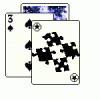Waterfall or agile? That's the first thing to decide 
Tip: Agile is the correct one.
Next, how many times you have failed already? It changes things, unless you are overgod (there are some people like that), you will fail several first projects. So for first time failure the critical part is a strict deadline (if you are pressed on time), since you want to fail fast, early and a lot (on the other hand going on with a long project doomed to failure gives you some additional experience). After you finished your first game you can give yourself some more slack (but not too much  ).
).
Basicly, determine your time budget, this is the most important aspect that will affect the whole design process.
Next, get a decent solid idea before you start (it's highly recommend to talk about it with others - not your team). You don't want to invent core features after you started the project (I make this mistake over and over again and always pay for it  So, don't be like me
So, don't be like me  ).
).
Then determine your financial budget (how much money you are willing to put into it before you get any sales - if that's your first project set it at "0"  ).
).
Once these are covered I start the project:
1) I write down all core design goals and explanation of some mechanics (not all). Also I research the "marketing" part (who will play my game, track appropriate forums, websites of that genre, fan groups, etc).
2) Then I decide on release date (extremelly important!) and the price.
3) Then I make a prototype.
4) If prototype is good I proceed, if not the project is scrapped.
5) I decide on some sort of overall shedule, at least the milestones like alpha, beta, crowdfunding/greenlight (if needed/planned), final release, etc. Also look for contractors (artists in my case).
6) Then I make the game (if lucky  ) adjusting it/redoing as needed.
) adjusting it/redoing as needed.
7) If the game was not cancelled by now I do the release (and all alpha/beta/whatever). And... go on vacations 
8) Then, after release I end up in a hell, bug fixing, missing urgent features, etc, etc. All the usual pile of stuff that pop up after you thought you made the game.
9) After like 6 months it all calms down and I only maintain the game and can proceed with another one.
Original Poster here!
Solid responce guys! (not just this quoter)
I have failed about 4 times in the past and I TOTALLY agree, failing faster is very important! hahah I am relativly new to game design practices and find that failing is the best thing you can do! (for leaning and improving that is). It's funny, when starting game design I thought failing faster was a weird concept until you do it. Then you truly understand how benificial it is.
I have been tinkering away at this new game for a few months now. I was in pre-production faze ironing out the details, getting some rough concepts done just to spit ball ideas and now we are in the prototype faze. We were doing heavy research into planetary procedural generation and that gobbled a lot of time. I decided to scrap that for now and stick to more traditional methods for our first project. Too much time was waisted and we need more practice with standard stuff.
Working on this for a hobby, its hard to have all team members get jazzed about working on this. Especially programmers, coding is hard work so asking some people to help after a fulls day work on another job is tricky.
I find that artists are like dogs, cool with helping into all hours of the morning, with you through thick and thin. While programmers are like cats effeciant,finiky, scare easy and operate on their own time. ( No offence to anyone, I say this in good humor )
)
I guess I was looking for more of a general order of how games are typically built. I know every person or studio is different, and so is project scope. I would like to know a tried and tested way that works commonly in game development.
Example: What should the team do first, work from the inside out (Characters, core mechanics, weapons than environments etc) or work from the outside in (environment, level design, characters, core mechanics etc). I asked a few other devs and everyone gives different advice, most cut eachother up for their design tecnique. Some say use GDD, some don't even bother with it (silly in my mind not to).
Dirty prototypes are the way of it. After working from the outside in, I realize that working from the inside out is best. Working on core mechanics and making sure its fun just to be in the game in the first place. Then we should see how it plays in the environment with the core mechanics at work. (unless I am wrong about that haha)
I need to know what should generally be created asset wise first. I have made massive milestone schedules in the past and more often than not people don't follow along and miss their dead lines constantly. No pay, people just don't bother as much as I would like. Understandable but poor work eithic. I understand why indie teams fail (in the bad way) so much! Money talks.
1)What should artists work on first?
2)What should programmers code first?
Basically I would like to have a guidline, more like a mentor to help me out and steer me in the right direction! An apprenticeship so to speak, without the hassle of going to game design school (over priced and some say not worth it). I come to you guys, looking for this help, please be kind and remember what it was like when you first started.
PS: No spell check, so don't harp on me grammer lovers ;)










